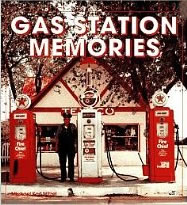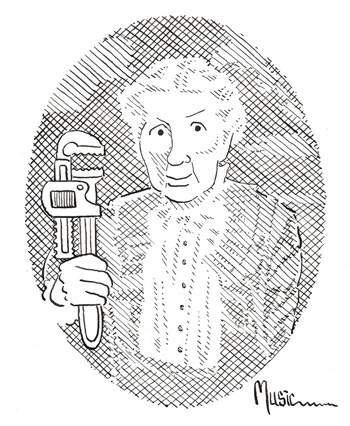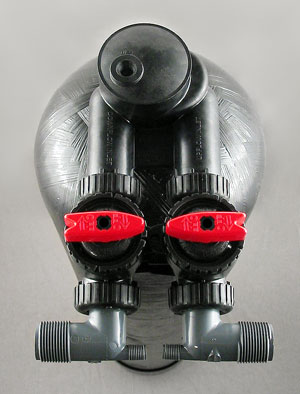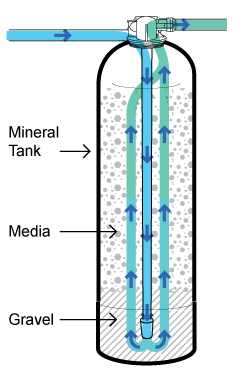Water News for June 2012
While you had one eye on the tropical storms, one eye on the Colorado wildfires, and one eye on the thermometer, a lot of important things happened in the world of water. Read on to hear all about it.
Over-Development Was Blamed as a Prime Cause of the Poor State of New Jersey’s Wells
Under New Jersey’s Private Well Testing Act some 62,000 of the state’s wells were tested between 2002 and 2009. A surprising one in eight of these wells was in violation of safe limits for mercury, arsenic, nitrates or VOCs (volatile organic compounds). Over-development was blamed for the extensive well pollution. Another study found that 1/3 of wells are affected by over-development.
“New Jersey is failing when it comes to protecting families on individual wells from pollution. Not only do one-in-eight wells actually fail and are a risk to public health, but there are thousands of other wells that put people at risk. This is not only a serious health problem, but it shows that over development and the failure to clean up contaminated sites could be impacting people’s health,” said Jeff Tittel, Director of the New Jersey Sierra Club.
Read the full report for details.
1.2 Million Square Miles of Ocean off Australia Are Now Off Limits to Oil Drillers and Commercial Fishermen
Australia announced that it is creating the world’s largest marine reserve. It is setting aside 3.1 million square kilometers (1.2 million square miles) that cannot be used for commercial fishing or fossil fuel exploration. In order to offset losses incurred, the government will allocate $100 million AUS to fishermen displaced by the new reserves.
Although this action is a drop in the ocean in terms of solving the world’s ocean crisis, 3.1 million square kilometers is larger than Alaska, California, Texas, and Montana combined. So it is definitely a good start. Many fishermen are unhappy with the new provision.
Details about Australia's new marine reserve.
 |
| The Hoffmann Tower, pictured above, sits beside the historic Hoffmann Dam on Illinois' Des Plaines River. The dam is in the process of being destroyed. The Hoffmann Dam dates back to 1830. It has been rebuilt several times. The tower was built in 1908. More details. . |
Millions of Gallons of Oilfield Wastes Dumped Illegally into Pennsylvania Streams
A businessman from Greene County, Pa. was sentenced to seven years of probation, 1,750 hours of environment-related community service, and payment of $257,316 in restitution after he admitted to illegally dumping millions of gallons of oilfield waste water that his company had been paid to dispose of legally. He was also barred by the court from working in the wastewater removal business again.
The 50 year old business owner, Robert Allan Shipman, and his company orchestrated a scheme to dump gas drilling wastewater and sludge into streams and onto business properties in Allegheny, Fayette, Greene, Lawrence, Washington and Westmoreland counties between 2003 and 2009.
Read More
Mercury Is A Deadly Toxin that Poisons Humans Mainly Through the Eating of Fish. The Natural Resources Defense Council Has Published Its List of the 25 Worst Great Lakes Mercury Polluters.
Mercury is a neurotoxin that harms the lungs, the kidneys, the immune system, the heart and the brain. The young and the unborn are most at risk and severe developmental problems can result from mercury poisoning.
In the Great Lakes region, there are more than 144 coal-fired power plants which pumped over 13,000 pounds of mercury into the air in 2010. Mercury pollution from these plants' region accounts for close to 25 percent of the nation’s total.
Eating poisoned fish is the primary cause of mercury poisoning of humans.
According to a new report from the NRDC (Natural Resources Defense Council), over half of the Great Lakes region’s noxious mercury pollution can be attributed to the 25 worst coal-fired power plants in the Great Lakes area.
The List of Polluters and More Details.
While Preaching Austerity, Congress Treated Itself to $860,000 Worth of Expensive Bottled Water
According to Corporate Accountability International, the House of Representatives spends at least $860,000 on bottled water a year. That’s almost $2,000 for each representative.
While representatives were demanding cuts on everything from public libraries to Social Security, they were spending hundreds of thousands of tax dollars on drinking water, which costs only about a penny per gallon from the tap. The report states that with the money the House spends in a single year on bottled water,
it could purchase more than 4,000 drinking fountains, ‘bottle-less’ coolers and water filtration units on Capitol Hill – more than enough for each Congressional office and a one-time investment in water infrastructure that would show Americans that Congress is serious about saving money and supporting public water.
The study also found that 70 percent of the bottled water of questionable purity was purchased from industry leader Nestlé.
Read more details.
Michigan Is Struggling Under the Burden of Orphan Leaky Abandoned Storage Tanks
There are some 9,100 LUSTS (Leaky Underground Storage Tanks) in Michigan. Fourteen hundred of these pose an immediate threat to groundwater. The average cost for a LUST cleanup is $400,000. State laws protecting landowners from responsibility have left the state with some 4500 “orphan” sites to pay cleanup on, after the gasoline vendors pocketed their money and moved on.
Cleanup of these orphan sites would take 90 years and cost the state $1.8 billion. Michigan is broke.
 |
| When the oil company closed the station, it didn't bother to dig up the underground storage tank. When corrosion and rust eat away at aging metal tanks, gasoline or other chemicals seep into soils and groundwater. Federal regulations enacted in the 1980s require gas stations to replace leaky metal tanks with more durable fiberglass tanks, but the nation is still full of aging metal tanks. In most cases taxpayers are handed the bill for the expensive cleanup. |
More details from the Circle of Blue Website.
Pig Toilets In Taiwan Have Spared the Water, Cleaned Up the Environment, and Saved Producers Money
In his book Beyond Beef, Jeremy Rifkin estimates that cattle and livestock account for twice the amount of pollutants as comes from all US industrial sources. According to another source, “Every second 250,00 pounds of excrement are produced from livestock in the USA.”
It’s surprising how little has been done in the US to address the massive amount of pollution and water waste that come from livestock breeding.
Read on to see how Taiwanese farmers are coping with excessive pig manure.
Dawn of a thirsty century
by Alex Kirby, BBC Correspondent
The amount of water in the world is limited. The human race, and the other species which share the planet, cannot expect an infinite supply.
Water covers about two-thirds of the Earth's surface, but most is too salty for use.Only 2.5% of the world's water is not salty, and two-thirds of that is locked up in the icecaps and glaciers.
Of what is left, about 20% is in remote areas, and much of the rest arrives at the wrong time and place, as monsoons and floods.
Humans have available less than 0.08% of all the Earth's water. Yet over the next two decades our use is estimated to increase by about 40%.
Read the Rest of This Excellent Article on the BBC's Website
Water News of the Month
Here are a month's worth of water stories from the Pure Water Gazette's "Today's Top Water Story" feature. Some are referenced in this issue.
 |
How Simple In/Out Whole House Filters Work
by Pure Water Annie
For removing chlorine or chloramine from clean city water, In/Out filters are often the best choice.
|
Simple point of entry (whole house) water filters that do not backwash to clean and resettle their filter media are often called "in/out" filters. The water simply goes in one side, passes through the filter media, then goes out the other side. There's nothing fancy about this type filter. It's a big tank called a mineral tank that is filled with granular filter media. It has a simple center tube called a "riser" or "dip tube" to direct the flow of water inside the tank.
Simple filters of this type can normally be installed as either upflow or downflow filters simply by changing the direction of flow inside the tank. The picture above shows an upflow installation. Water enters the tank head and is sent down the center tube to be released at the bottom of the tank. It slowly works its way upward through the media to the top of the tank where it exits the filter.
In the downflow version, water enters the media at the top and filters down through the media bed to the bottom, where it enters the bottom end of the riser tube and is sent back to the top and out to the home.
In/Out filters are inexpensive as compared with backwashing filters. Their simplicity also makes them attractive alternatives to backwashing filters in many situations. Their use is limited, however, mainly to use as dechlorinating filters for city water and for neutralizing filters for acidic well water. Plus, the water they treat must be clean, so it's wise to always install a sediment filter in front of an in/out filter.
In/Out filters do not work as iron filters, because a backwash function is needed to get rid of the trapped iron. Likewise, they do not work as sediment filters and must, as noted, be protected from sediment when they are used as city water dechlorinating filters or as neutralizing filters for wells.
In/Put filters actually have an advantage over backwashing filters for city water dechlorination in that more media can be loaded into the tank since freeboard space does not have to be left at the top of the tank to accommodate backwashing. For example, a 10" X 54" backwashing filter can be loaded with 1.5 cubic feet of carbon, but a 2.0 cubic foot bed works well in an In/Out filter.
In most filter designs, with simple filters like those shown on this page, a downflow filter can be installed as an upflow filter simply by reversing the direction of flow into the tank.
In/Out vs. Conventional Backwashing Filters
| |
In/Out Filter |
Automatic Backwashing Filter |
| Cost |
Less expensive. No automatic control valve needed. |
Costs more because of the expensive control valve. |
| Ease of installation. |
No drain connect needed. No electrical connection. |
Needs drain and electricity. |
| Size |
Can be sized slighly smaller because the tank can be loaded almost to the top. |
Top third of the mineral tank must be left empty ("freeboard space") to allow backwash. |
| Versatility |
Limited to carbon (dechlorinaton, dechloramination) and calcite (pH increase) applications. (This style is also used for scale prevention units, which really aren't filters.) |
Can be used for anything: chlorine and chloramine reduction, iron/manganese, sediment, hydrogen sulfide, pH increase. |
| Pretreatment Requirment |
Should always be preceded by at least a 5 micron sediment filter. |
Requirement depends on usage. For clean city water, a sediment filter is optional. |
| Service Flow per Tank Size |
For chlorine/chloramine reduction, slightly higher because the tank holds more carbon. |
For chlorine/chloramine reduction, slightly lower because the tank holds less carbon. |
| Maintenance Requirements |
Less maintenance because there are no moving parts. For chlorine/chloramine treatment, media change is usually less frequent because the tank holds more media. |
Normally trouble free, but control valves eventually require service. |
 |
| Sturdy Clack In/Out Head with Bypass. The red handles allow for easy diversion of water around the filter. Installation is easy. No drain or electrical connection needed. |
 |
Numerical Wizard B. Bea Sharper ferrets out the watery facts that Harper's misses
|
Facts You Would Have Learned from This Issue Had You Been Paying Attention
Proportion of New Jersey wells found to have dangerous levels of mercury, arsenic, nitrates or VOCs in an extensive private well testing survey--1 in 8.
Square miles set aside by Australia in an impressive marine reserve allotment--1.2 million.
Trivial fine assessed a PA businessman convicted of illegal waste dumping over a seven-year period--$257,000.
Approximate pounds of mercury put in the the environment in a single year by coal-powered energy plants in the Great Lakes region--13,000
Average cost of a Leaking Underground Storage Tank cleanup--$400,000.
Portion of the Earth's surface that is covered by water--2/3.
Total percentage of the Earth's water that is actually available to humans--0.08%.
Percentage that human water use worldwide is expected to increase in the next two decades--40%.
Annual expenditure of the US House of Representatives for bottled water for its members -- $860,000.
According to Jeremy Rifkin, the per second excrement production of American farm animals --250,000 pounds.
New From Pure Water Products
Pure Water Products has added an interesting new product called the Sand Trap to its main website. The Sand Trap system does not work by conventional filtration but by directing the water through an internal swirl chamber then into a diverting plate. The process causes heavier particles to settle to the bottom of the tank for removal via a simple blow down valve.
If you live in Boston or San Diego and enjoy clean city water, this isn't something you need. But if you have a well that's putting out as much sand as water, the Sand Trap can bring peace back into your marriage and happiness back into your life.
For full details.
Pure Water Gazette Now in a New Format
Our information-stuffed variety magazine, the Pure Water Gazette, has taken another turn. The Gazette started as a paper publication in the 1980s. The last paper issue was mailed in 1997. It has existed since as an information-rich website whose navigation and aesthetic properties were suffering from years from neglect. Although the old site can still be seen here, the best of the old content has been relocated to a much more manageable blog-style format. The new site is up and running as a work in progress with 300 articles and many more to come. The new site is at the old location, http://www.purewatergazette.net. Please visit!
|






